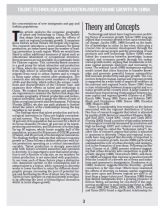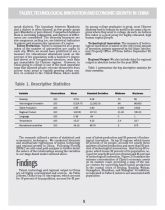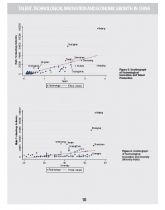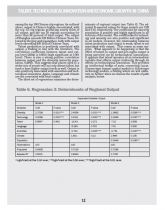Hledej
Zobraz:
Univerzity
Kategorie
Rozšířené vyhledávání
12 659 projektů
0 nových
Talent, Technological innovation and economic Growth in China
| Přípona |
Typ projekt |
Stažené 1 x |
| Velikost 0,3 MB |
Jazyk anglický |
ID projektu 2932 |
| Poslední úprava 27.03.2014 |
Zobrazeno 737 x |
Autor: eliseus |
 Sdílej na Facebooku
Sdílej na Facebooku |
||
| Detaily projektu | ||
- Cena:
2 Kreditů - kvalita:
87,1% -
Stáhni
- Přidej na srovnání
- Univerzita:Univerzita Tomáše Bati ve Zlíně
- Fakulta:Fakulta managementu a ekonomiky
- Kategorie:Ekonomika » Management
- Předmět:Management
- Studijní obor:-
- Ročník:-
- Formát:PDF dokument (.pdf)
- Rozsah A4:16 stran
China’s economic development record over the
past few decades has been remarkable. Both
scholarly research and popular commentary
have noted the nation’s meteoric rise as a
powerful new economic competitor. In the main, it
is argued that Chinese development has turned on
the nation’s huge market and low costs, especially in
manufacturing. But more recent commentators note
China’s rapidly rising rate of human capital production,
particularly its huge and growing production of
scientists and engineers, alongside rising investments
in its universities and academic infrastructure and
its growing ability to conduct research and development
and attract the R&D affiliates of foreign multinationals.
But few if any analyses have focused on the
regional underpinnings of Chinese development and
none to our knowledge has focused on regional differences
in the production and use of human capital or
talent.
past few decades has been remarkable. Both
scholarly research and popular commentary
have noted the nation’s meteoric rise as a
powerful new economic competitor. In the main, it
is argued that Chinese development has turned on
the nation’s huge market and low costs, especially in
manufacturing. But more recent commentators note
China’s rapidly rising rate of human capital production,
particularly its huge and growing production of
scientists and engineers, alongside rising investments
in its universities and academic infrastructure and
its growing ability to conduct research and development
and attract the R&D affiliates of foreign multinationals.
But few if any analyses have focused on the
regional underpinnings of Chinese development and
none to our knowledge has focused on regional differences
in the production and use of human capital or
talent.
Klíčová slova:
economic
development
universities
knowledge
competitor
Obsah:
- Abstract
Introduction
Theory and Concepts
Data, Variables and Methodology
Findings
Conclusions
References
Zdroje:
- Berry, C.R., and Glaeser, E.L. 2005. The Divergence of Human Capital Level across Cities. Working paper. Chicago, IL: University of Chicago.
- Black, D., and V. Henderson. 1998. A theory of urban growth. Journal of Political Economy 107 (2): 252 - 84.
- Chinese Academy of Sciences, http://www.alc.cas.cn/index/0l/2120.htm (2002).
- Desrocher, P. 2001. Diversity, human creativity, and technological innovation. Growth and Change 32 (Summer): 369 - 394.
- DeVol, R. 1999. America’s high-technology economy: Growth, development, and risks for metropolitan areas. Santa Monica, CA: Milken Institute.
- Eaton, J., and Z. Eckstein. 1997. Cities and growth: Theory and evidence from France and Japan. Regional Science and Urban Economics 27 (4-5): 443 - 74.
- Florida, R. 1999. Competing in the age of talent. Report to the R. K. Mellon Foundation, Rittsburgh, PA. http://www.heinz.cmu.edu/~florida.
- 2002a. Bohemia and economic geography. Journal of Economic Geography 2:55 - 71.
- 2002b. The rise of the creative class: And how it’s transforming work, leisure, and everyday life. New York: Basic Books.
- 2002c. The Economic Geography of Talent. Annals of the Association of American Geographers, 92 (4): 743 - 755.
- Florida, R., and G. Gates. 2001. Technology and tolerance: The importance of diversity to high-tech growth. Washington, DC: Brookings Institution, Center for Urban and Metropolitan Policy.
- Glaeser, E. L. 1998. Are cities dying? Journal of Economic Perspectives 12:139 - 60.
- 1999. The future of urban research: Nonmarket interactions. Washington, DC: Brookings Institutions.
- 2000. The new economics of urban and regional growth. In The Oxford handbook of economic geography, ed. Gordon Clark, Meric Gertler, and Maryann Feldman, 83-98. Oxford: Oxford University Press.
- Glaeser, E. L., J. A. Sheinkman, and A. Sheifer, 1995. Economic growth in a cross-section of cities. Journal of Monetary Economics 36:117 - 43.
- Glaeser, E. L., J. Kolko, and A. Saiz. 2001. Consumer city. Journal of Economic Geography 1:27



